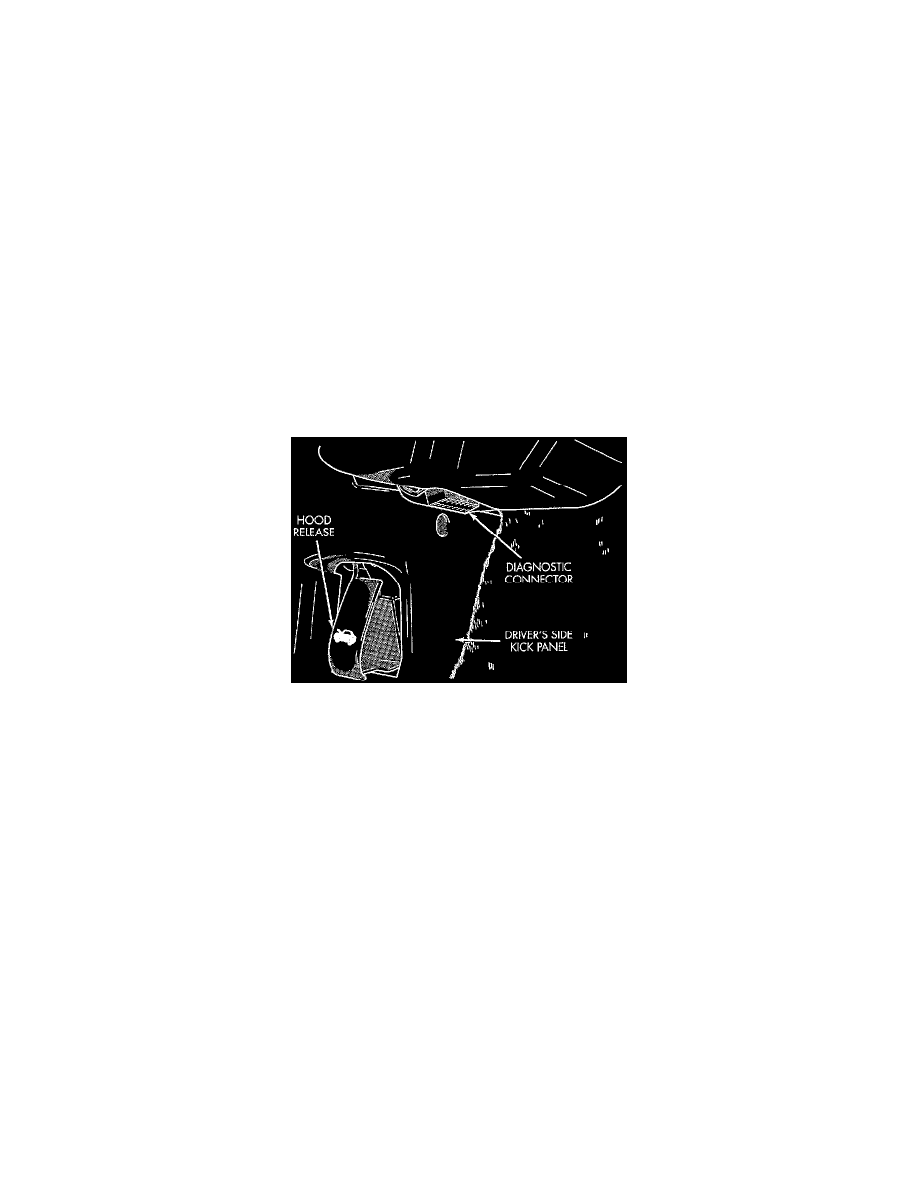Stratus V6-2.5L VIN H (1997)

Brake Bleeding: Service and Repair
Antilock Brake System Bleeding Procedures
GENERAL INFORMATION
The base brake system must be bled anytime air is permitted to enter the hydraulic system, due to disconnection of brake lines, hoses or
components. The Antilock Brake System (ABS), particularly the Hydraulic Control Unit (HCU), should only be bled when the HCU is. replaced
or removed from the vehicle, or if there is reason to believe the HCU has ingested air. Under most circumstances that would require brake
bleeding, only the base brake system needs to be bled. It is important to note that excessive air in the brake system will cause a soft or spongy
feeling brake pedal.
During Bleeding Operations - be sure that the brake fluid level remains close to the FULL level in the reservoir. Check the fluid level
periodically during the bleeding procedure and add DOT 3 brake fluid as required. The Bendix ABX-4 Brake System must be bled as two
independent braking systems. The non ABS portion of the brake system is to be bled the same as any non ABS system. Refer to Brakes Service
and Repair for the proper bleeding procedure to be used. This brake system can be either pressure bled or manually bled. The ABS portion of
brake system MUST be bled separately. This bleeding procedure requires the use of the DRB scan tool and the bleeding sequence procedure
outlined below.
ABS BLEEDING PROCEDURE
When bleeding the ABS system, the following bleeding sequence MUST be followed to insure complete and adequate bleeding. The ABS system
can be bled using a Manual bleeding procedure or standard Pressure Bleeding Equipment. If the brake system is to be bled using pressure bleeding
equipment, refer to Brakes Service and Repair.
1.
Assemble and install all brake system components on vehicle making sure all hydraulic fluid lines are installed and properly torqued.
System Diagnostic Connector Location
2.
Connect the DRB scan tool to the diagnostics connector. The diagnostics connector is located under the lower instrument panel next to the
left kick panel.
3.
Using the DRB scan tool, check to make sure the CAB does not have any fault codes stored. If it does, remove them using the DRB scan tool.
WARNING: WHEN BLEEDING THE BRAKE SYSTEM WEAR SAFETY GLASSES. A CLEAR BLEED TUBE MUST BE
ATTACHED TO THE BLEEDER SCREWS AND SUBMERGED IN A CLEAR CONTAINER FILLED PART WAY WITH
CLEAN BRAKE FLUID. DIRECT THE FLOW OF BRAKE FLUID AWAY FROM THE PAINTED SURFACES OF THE
VEHICLE. BRAKE FLUID AT HIGH PRESSURE MAY COME OUT OF THE BLEEDER SCREWS WHEN OPENED.
4.
Bleed the base brake system using the standard pressure or manual bleeding procedure as outlined in Brakes Service and Repair.
5.
Using the DRB scan tool, go to the "Bleed ABS" routine. Apply the brake pedal firmly and initiate the "Bleed ABS" cycle one time. Release
the brake pedal.
6.
Bleed the base brake system again, as in step Step 4 above.
7.
Repeat steps Step 5 and Step 6 above until brake fluid flows clear and free of bubbles. Check brake fluid level in reservoir periodically to
prevent reservoir from running low on brake fluid.
8.
Test drive the vehicle to be sure brake are operating correctly and that pedal is solid.
